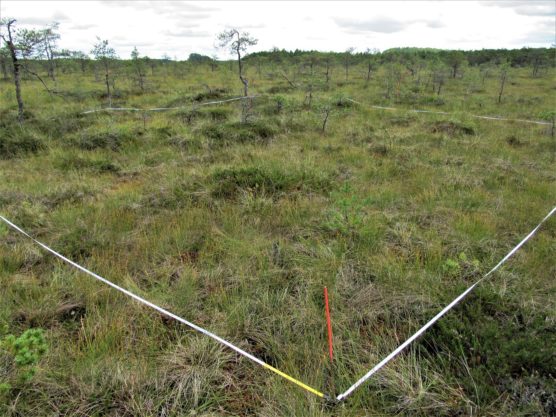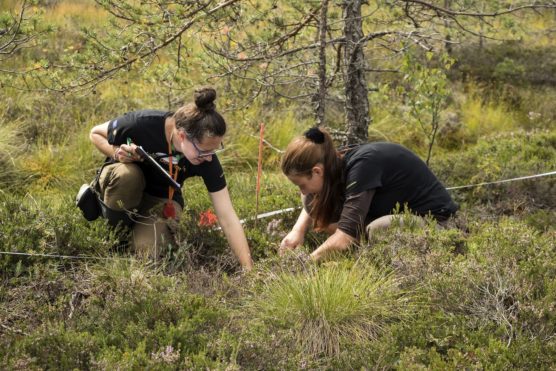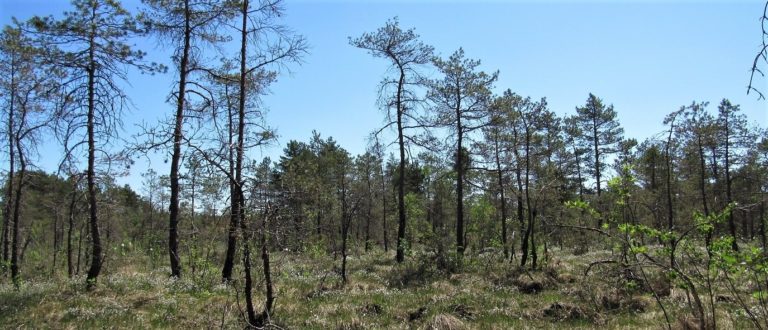In August 2018, establishment of vegetation monitoring plots is completed in all Latvian project areas – Lake Engure, Augstroze and Baltezers Mire. The vegetation monitoring is necessary to assess the vegetation condition before and after the peatland restoration proposed within LIFE Peat Restore project. Along with monitoring of groundwater table, instrumental greenhouse gas (GHG) measurements and indirect GHG estimation by using GEST approach the vegetation monitoring will allow assessing the project’s contribution to recovery of peatland ecosystems and their functions.
In the Latvian project areas, the vegetation experts have recorded the current condition by establishing 3–4 permanent large sample plots of size 100 m2 at each site. Within each large plot nine 1 m2 square-shaped plots are located. In each small plot, all plant species and their covers were recorded, and the tree diameters measured. The sample plots are placed both in degraded and relatively intact parts of the mires. Additional 30 plots small 1 m2-sized plots are located in Engure site where beside ditch blocking clearing of shrubs and trees is proposed.

Plant species composition is an excellent indicator that allows detecting the “health” condition of peatland ecosystem. In drained peatlands, species typical for dryer conditions can be found. The formerly open mires are overgrowing with forest that, in turn, increases the drainage effect through increased evapotranspiration.
In Madiešēnu Bog in Augstroze Nature Reserve, a raised bog, where the major peat formers are sphagnum mosses, the drainage causes decline or, in severely drained parts, extinction of sphagnum. Often they are replaced by bare peat patches or mosses and lichens of dry coniferous forests. Due to drainage cottongrasses Eriophorum spp. and white-beak sedge Rhynchospora alba are being replaced by dwarf shrubs (heather Calluna vulgaris, bog myrtle Ledum palustre, bog bilberry Vaccinium uliginosum, crowberry Empetrum nigrum, etc.).
In Baltezers Mire, a transition mire with elements of alkaline fen vegetation, the drainage has caused increased overgrowing with trees. Well-pronounced drainage effects are found in the vicinity of ditches, where the mire is densely overgrown with trees, and the ground vegetation is dominated by dwarf shrubs, and some atypical species are present (e.g. plants of dry grasslands and forests).
In alkaline fens near the Lake Engure, the areas affected by drainage are increasingly overgrowing with pines, birches and white alder. On the ground vegetation, the typical alkaline fen species, such as brown bog-rush Schoenus ferrugineus, orchids, primerose Primula farinosa, brown mosses, etc. are largely replaced by purple moor-grass Molinia caerulea. The least forms dense litter, thus transforming the vegetation structure and composition.

The project experts expect that blocking of ditches will help to diminish the fluctuation of groundwater level and thus the vegetation in the drained parts will recover. This, in turn, is essential for recovery of peat accumulation proccess and increased carbon sequestration.



